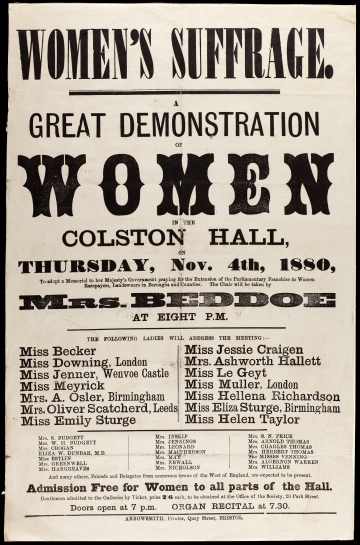How effective was the 'Votes for Women' campaign in Bristol?
The full resource is FREE to all registered users of the website
If you are not already registered you can sign up for FREE website access to download the full resource.

This enquiry gives students the opportunity to explore the suffrage campaign on a local scale, through the lens of one specific, important city – Bristol. Using a range of evidence, students will look in detail at events in Bristol and then compare it to the ‘textbook’ version of events, looking for similarities and differences.
Key learning points
- The 30 women from Bristol and Bath who signed the 1866 petition
- Suffragist and suffragette activities and events in Bristol
- The chronology of the campaign in Bristol
- Key individuals
- Using contemporary sources to examine reactions to the campaign and to make judgements about the level of success
- Examination of similarity and difference between the local and national campaigns
Scholarly rationale
Increasingly, research into the suffrage campaign is focusing on the local area. Much evidence has emerged recently, some of it changing our perceptions of the campaign. This enquiry gives us an opportunity to dig deep into specifics and thus, hopefully, to add to our understanding of the ‘Big Picture’ history of the topic.
Curricular rationale
Both suffrage and local history are part of the Key Stage 3 history curriculum. This lesson gives us an opportunity to do both, if you are a Bristol area school, and to explore a significant case study of suffrage in action if you are not from the Bristol area. By examining events in one city in detail, students are allowed to ask questions about similarity and difference, as well as impact.
